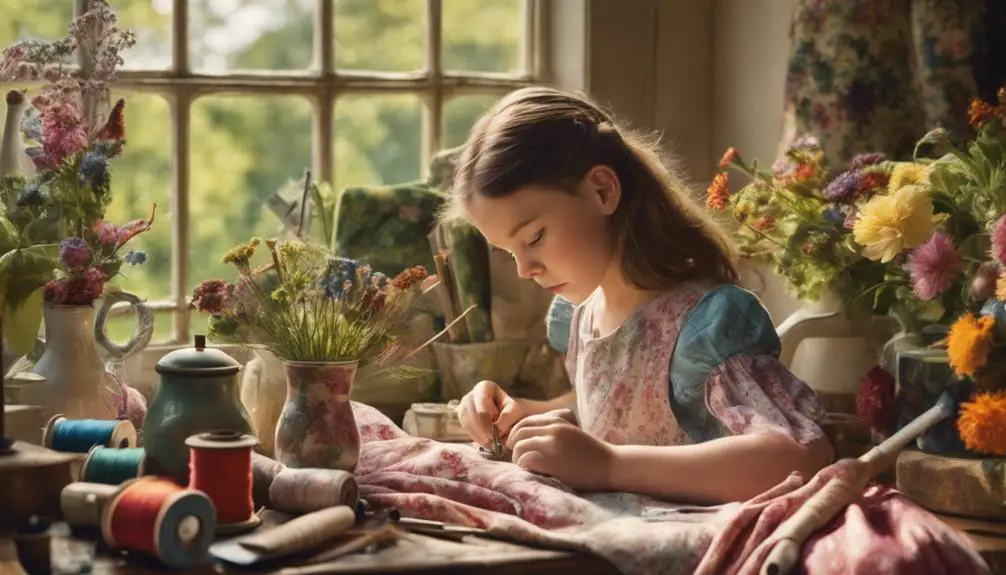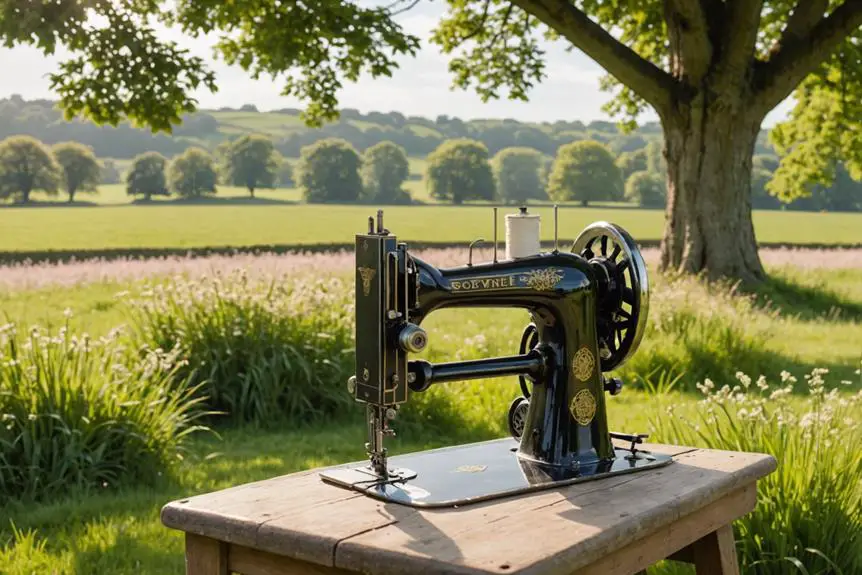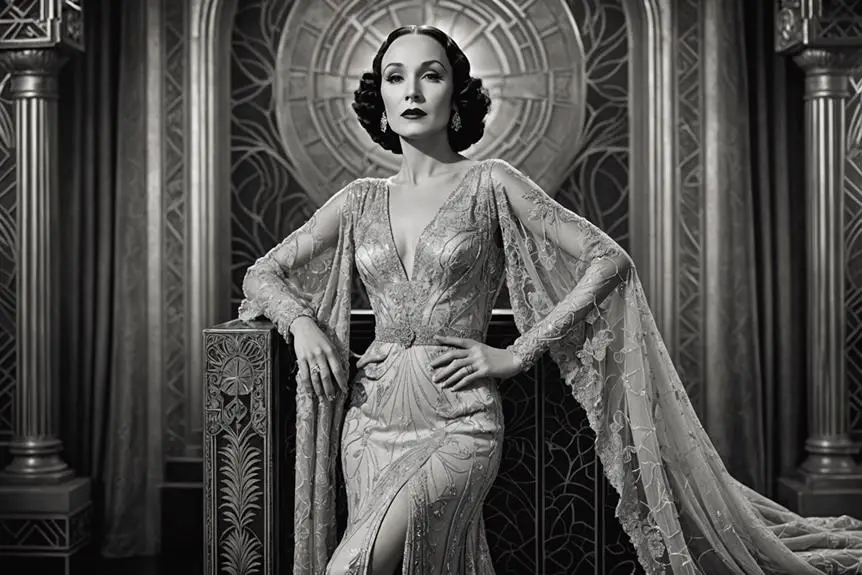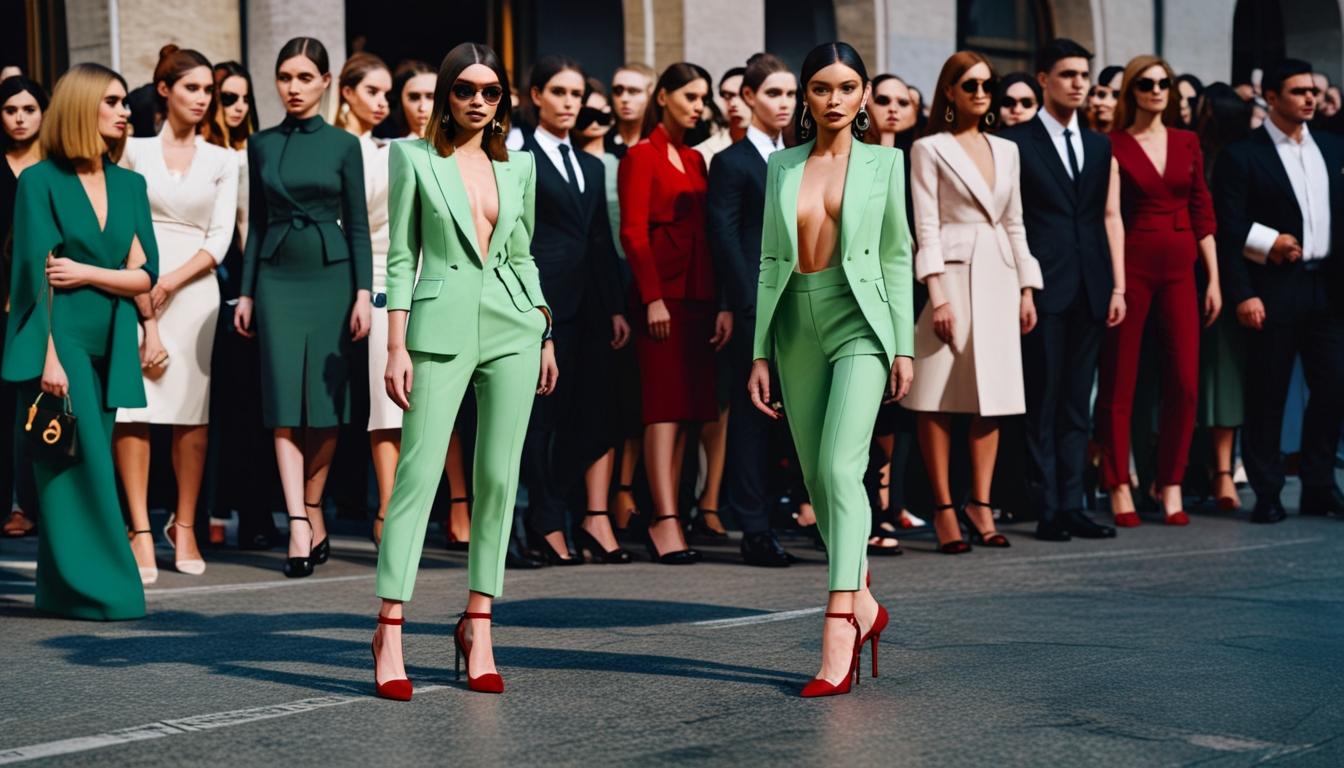You might not realize that Stella McCartney, daughter of Paul McCartney, carved her own identity in the fashion world by prioritizing ethical practices long before they became trendy. When she launched her eponymous brand in 2001, her commitment to sustainability and a no-animal-products policy set a new standard in the industry. Yet, the story of how she navigated the challenges of establishing a brand that combined high fashion with strong ethical values is both intriguing and complex. What drove her to take such bold steps, and how did it shape the fashion landscape?
Early Life and Influences

Stella McCartney's early life, shaped by her iconic parents, Paul and Linda McCartney, laid the groundwork for her future in fashion. Growing up on an organic farm in Sussex, you can see how the values instilled by her mother—particularly those surrounding beauty, vegetarianism, and animal rights—deeply influenced her approach to fashion.
This environment not only fostered her creativity but also sparked her passion for ethical fashion, making her a pioneer in sustainable design.
At just 13 years old, Stella began creating her own clothing, showcasing her dedication to fashion design early on. Her journey continued when she attended Ravensbourne College before graduating from Central Saint Martins in 1995. This pivotal moment in her life culminated in a graduate collection that featured renowned models like Naomi Campbell and Kate Moss, earning her significant attention and quickly establishing her reputation in the fashion world.
Stella's early experiences, including internships at prestigious fashion houses like Christian Lacroix, provided her with invaluable insights and skills that would shape her future designs.
These influences, combined with her upbringing and education, laid a strong foundation for her to challenge traditional fashion norms. You can see how her early life experiences not only molded her as a designer but also inspired her commitment to animal rights and sustainable practices, setting the stage for the groundbreaking work she'd accomplish in the fashion industry.
Career Beginnings
Although she was only 16 when she started her fashion career, McCartney quickly made a name for herself by interning with the esteemed designer Christian Lacroix. This opportunity provided her with invaluable experience in haute couture, laying a strong foundation for her future as a fashion designer.
Wanting to refine her tailoring skills further, she trained under Edward Sexton, a renowned Savile Row tailor. This mentorship notably influenced her distinctive approach to women's fashion, blending classic techniques with modern sensibilities.
In 1995, McCartney graduated from Central Saint Martins College of Art and Design, revealing a stunning graduation collection that featured prominent models like Naomi Campbell and Kate Moss. The collection generated notable media buzz, firmly establishing her presence in the fashion world.
Just two years later, in 1997, she was appointed head designer at Chloé, where she achieved commercial success and garnered a reputation for her innovative animal-free designs, a reflection of her commitment to ethical fashion.
Stella's journey didn't stop there. After a successful tenure at Chloé, she launched her eponymous fashion house in 2001, in collaboration with the Gucci Group.
This venture focused on sustainable practices and ethical fashion, which became cornerstones of her brand's identity. Her early career not only showcased her talent but also highlighted her dedication to promoting a more responsible approach to fashion, setting the stage for the impactful legacy she continues to build today.
Establishment of the Brand

In 2001, McCartney launched her eponymous brand in collaboration with the Gucci Group, marking a significant shift from her role at Chloé. This joint venture not only allowed her to showcase her unique vision but also set the stage for a revolution in fashion. The first collection debuted during Paris Fashion Week in October 2001, enchanting audiences with her signature style that celebrated sustainable fashion and a commitment to ethical practices.
As a designer, Stella McCartney made a bold statement by establishing a strict no-animal products policy, becoming the first major designer to ban fur and leather from her collections. This groundbreaking move not only distinguished her brand but also resonated with a growing audience enthusiastic for cruelty-free alternatives in the fashion industry.
Over the years, the Stella McCartney brand flourished, expanding to operate 51 freestanding stores globally and making its mark in over 77 countries through more than 800 wholesale accounts.
In 2018, she took a significant step by acquiring full control of the brand after buying out Kering, further solidifying her dedication to sustainable fashion and ethical practices.
With each collection, you can see her passion for design and commitment to a better world, making Stella McCartney a beacon of hope and innovation in the fashion landscape. Her journey from a talented designer at Chloé to a powerhouse brand owner inspires those who believe in the potential of fashion to create positive change.
Commitment to Sustainability
McCartney's unwavering commitment to sustainability has been a defining feature of her brand since its inception. From the very beginning, Stella McCartney established a strict no-animal products policy, making her one of the first luxury designers to ban fur and leather. Instead, she focuses on innovative, eco-friendly materials such as organic cotton and recycled polyester, creating a path for environmentally responsible fashion.
A shining example of her sustainable vision is the Adidas Collaboration, where she developed groundbreaking sustainable sportswear, including the world's first vegan football boot in 2021. This partnership not only showcases her creativity but also reflects an industry shift towards ethical production practices.
In 2018, McCartney founded the Stella McCartney Cares Foundation, further emphasizing her dedication to ethical initiatives, including support for sustainability and breast cancer awareness. This foundation embodies her belief that fashion can be a force for good, impacting lives beyond mere aesthetics.
Moreover, her brand actively advocates for the Fashion Act policy in New York, promoting transparency and sustainability across the fashion industry. By championing this legislation, she inspires others to adopt a more responsible approach, showcasing her influence on broader industry standards.
In every stitch and design, Stella McCartney demonstrates that fashion doesn't have to compromise ethics for style. Her commitment to sustainability fuels a movement, proving that you can be stylish while caring for the planet.
Awards and Recognition

Stella McCartney's remarkable journey in the fashion industry has been punctuated by numerous awards and accolades that highlight her innovative spirit and commitment to sustainability.
Her dedication to ethical practices and her unique design aesthetic haven't only reshaped the fashion landscape but also earned her esteemed recognition.
Here's a snapshot of some of her impressive achievements:
- VH1/Vogue Designer of the Year (2000): Awarded early in her career, presented by her father, Paul McCartney, this accolade marked her entrance into the fashion world.
- Green Designer of the Year (2008): This award celebrated her relentless pursuit of sustainable practices, showcasing her as a pioneer in eco-fashion.
- Officer of the Order of the British Empire (OBE, 2013): This royal honor solidified her influence within the fashion industry.
- Designer of the Year and Designer Brand (British Fashion Awards, 2012): Winning both awards highlights her profound impact and success in the competitive fashion arena.
- Commander of the Order of the British Empire (CBE, 2023): Recently awarded by King Charles III, this recognition underscores her significant contributions to fashion and sustainability.
As Team GB's Creative Director, Stella McCartney continues to inspire with her commitment to both style and ethics.
Her awards and recognition not only reflect her personal achievements but also serve as a beacon for aspiring designers who wish to make a difference in the fashion industry.




